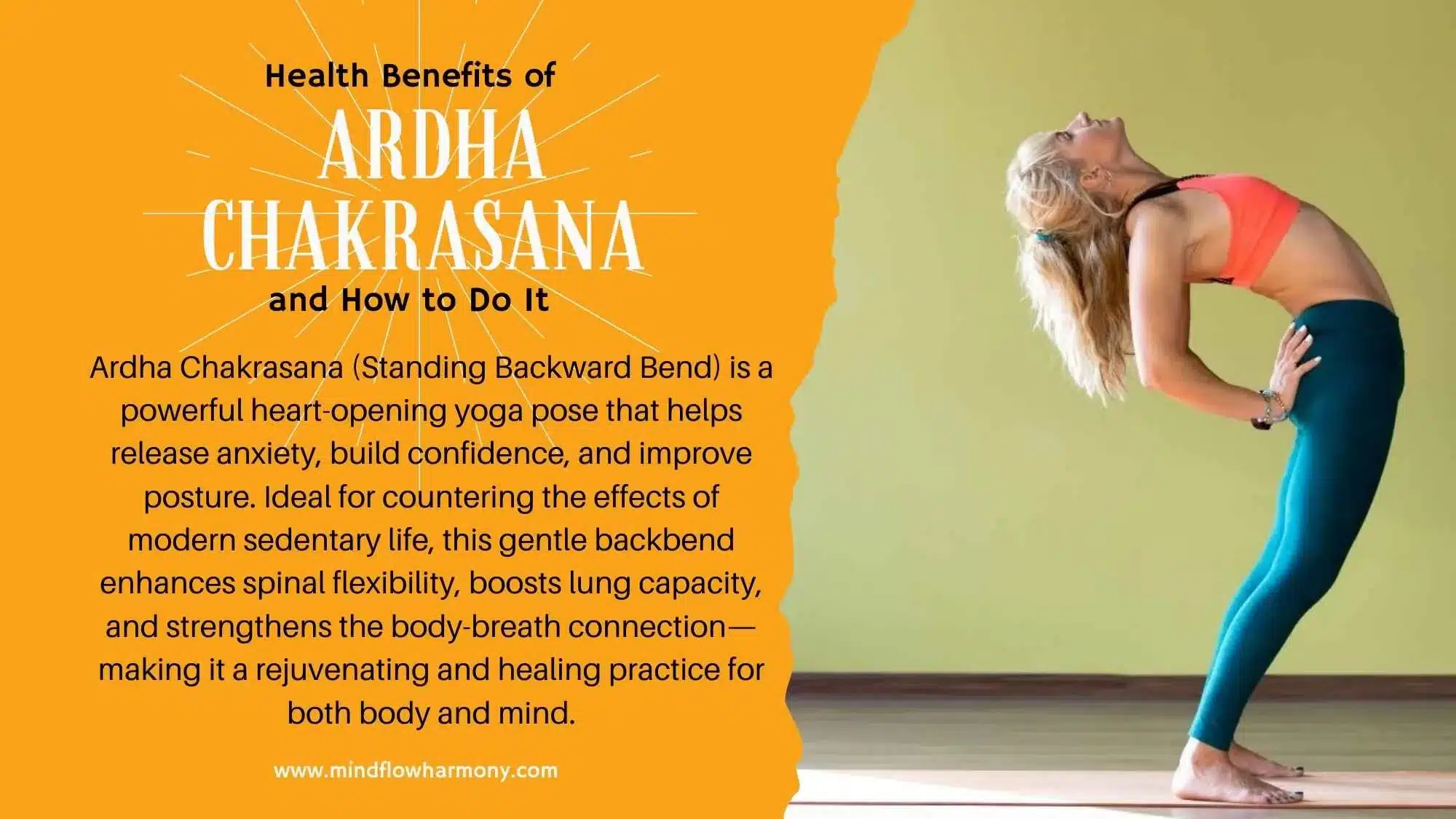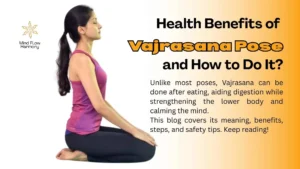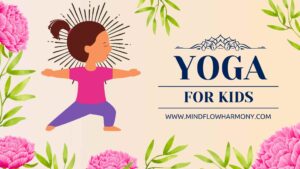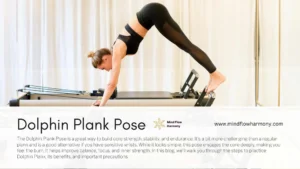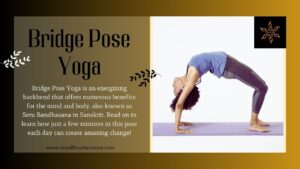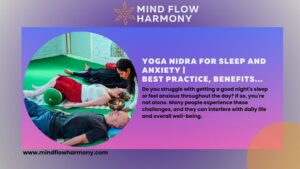In this blog we learn about how to do Ardha Chakrasana and health benefits of Ardha Chakrasana.
Ardha Chakrasana represents a yoga posture known as the Standing Backward Bend which stands as a strong yoga position that delivers heart-opening asanas. Practitioners should use this pose to experience growth while they let go of anxiety and develop confidence in both their physical and emotional aspects. The gentle backward posture creates expanded openness alongside enhanced body-breath connection together with resilient strength.
Yoga postures that require back bending stand as essential components because they work against the forward-hunched posture developed by contemporary life. Our human bodies naturally shrink when we remain seated at workstations use digital technology or experience mental distress. Ardha Chakrasana functions as a healing exercise that helps people generate space throughout their bodies while developing their flexibility and strength. This correct performance of this asana delivers multiple health advantages that include better spinal flexibility enhanced respiratory function together with mental clarity.
What is Ardha Chakrasana?
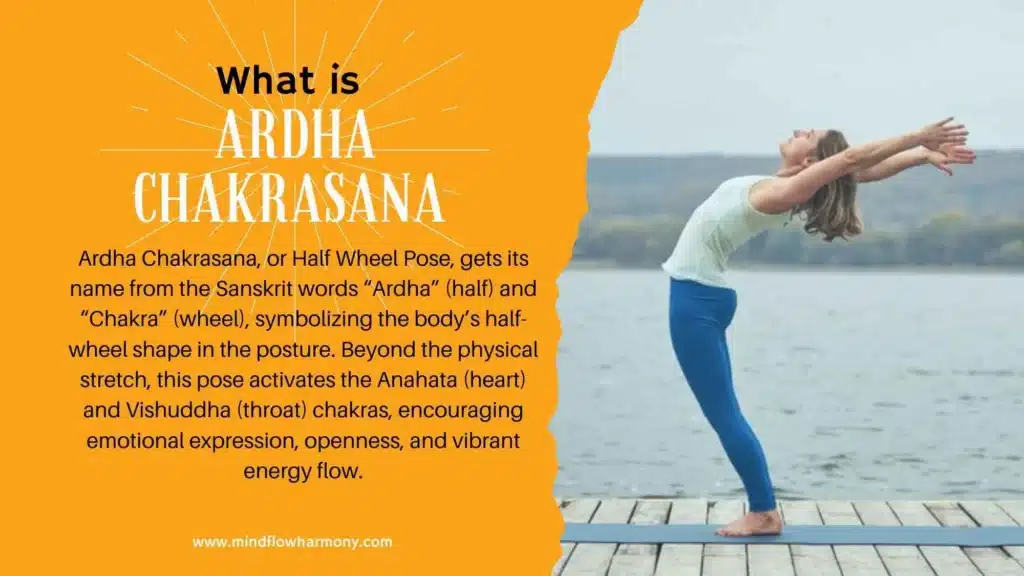
The Sanskrit terms “Ardha” signify “half” while “Chakrasana” means “wheel” in their Sanskrit breakdown. Ardha Chakrasana derives its name from two Sanskrit words: “Ardha” meaning “half” and “Chakrasana” coming from “Chakra” which translates to “wheel.” When combined the two Sanskrit words form the complete meaning of “Half Wheel Pose.” The posture assumes a half-wheel shape which describes the way your body forms during its execution.
The symbolic meaning behind the wheel in yoga reaches deep into its practice. Within the chakra system the energetic body functions through spinning wheels of energy. Performing Ardha Chakrasana stimulates the Anahata and Vishuddha chakras to help us express ourselves emotionally while achieving more life-forward energy.
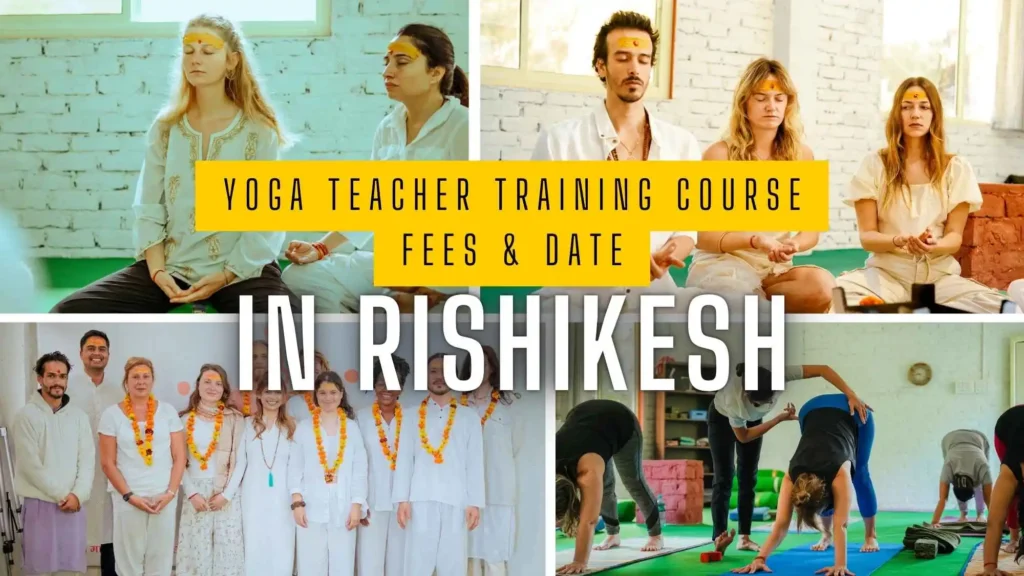
Significance of Backbends in Yoga Practice
The back-bending asanas demonstrate powerful changes that affect body and mind in a dual way. Backbends demand bravery from practitioners since backward bending forces one to surrender control while accepting vulnerability in the process. As a fundamental yogic concept, we learn to put our trust in the natural flow of existence.
Physically backbends help stretch the spine while addressing postural problems and creating body energy. Through this practice emotional release becomes possible because backbends create openness in both the chest and heart region. Frequent Ardha Chakrasana practice creates self-assurance as well as mental strength and enables an open and expansive perspective.
This pose also goes by Standing Backward Bend and Half Wheel Pose.
Ardha Chakrasana receives its name as the Standing Backward Bend because of how it moves the body. Ardha Chakrasana stands apart from Chakrasana (Wheel Pose) since it allows practitioners of most abilities to perform this posture without needing to transition from the floor. Its easy practice enables practitioners at all experience levels to achieve spinal extension along with chest opening without discomfort.
Health Benefits of Ardha Chakrasana
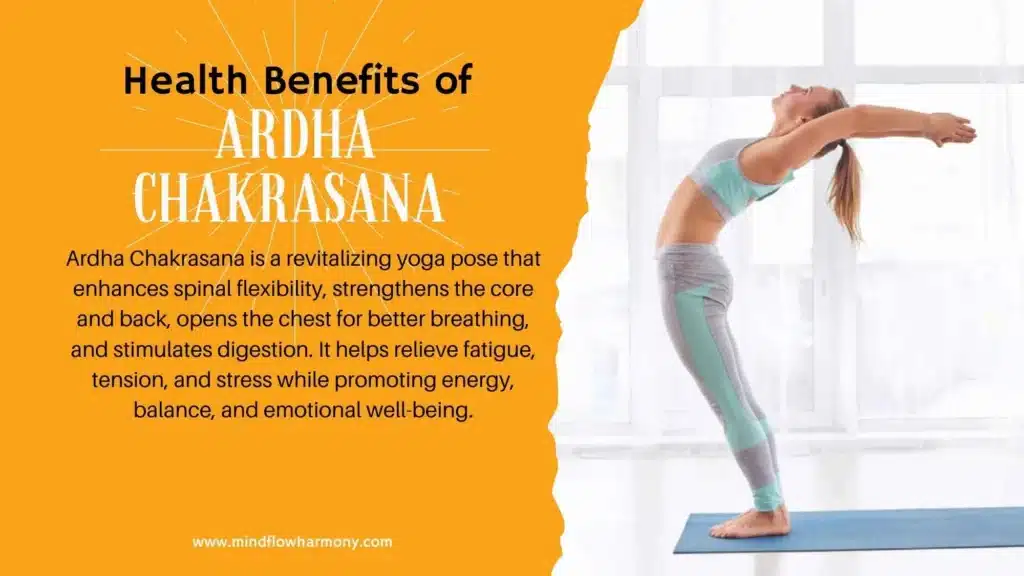
- Improves Spinal Flexibility & Strength
The major advantage of performing Ardha Chakrasana involves improving the spinal range of motion. When we perform this backward movement the vertebrae gain the freedom to move against stiffness that develops from sitting too long or from poor posture positions. The spine receives lubricating benefits from this movement which helps it remain flexible and youthful.
The practice strengthens all the back muscles particularly the erector spinae which act as spine support. A person needs a robust back to hold their body erect and avoid developing prolonged discomfort or enduring injuries. People who practice this asana consistently achieve better spinal wellness and enhanced body mobility.
- Ardha Chakrasana widens the chest area while improving lung functionality.
Through Ardha Chakrasana practitioners can open their hearts while their rib cage expands to breathe at full capacity. Stress along with improper position leads most of us to breathe shallower than our bodies need while reducing our oxygen consumption. Practicing this asana allows the lungs to become more efficient in their expansion thus enhancing respiratory health. Deep breathing practice creates direct associations with mental clarity as well as relaxation outcomes.
- Boosts Energy & Relieves Fatigue
The body experiences mental and physical revitalization through the practice of backbends. Ardha Chakrasana activates nerve system functions through increased blood circulation which spreads energetic impulses throughout your entire body. Ardha Chakrasana functions well as a morning practice and serves as an excellent posture for declining energy levels.
- Aids Digestion & Relieves Constipation
During Ardha Chakrasana the moderate stretch in the abdomen activates digestive organs to promote their proper functioning. Ardha Chakrasana delivers therapeutic stimulation to the stomach and intestines which enhances peristaltic movement that transports food normally through the digestive system.
- Helps to make the core muscles and lower body parts stronger
The main spinal extension element of Ardha Chakrasana simultaneously strengthens both the core muscles and the lower body. Ardha Chakrasana depends heavily on the strength of abdominal muscles for both balance and stability maintenance. The abdominal muscles tighten throughout the backbend motion which strengthens them while creating tonal effects.
- Reduces Back & Neck Tension
The combination of modern life activities produces tension in both the back area along the neck and shoulders. Too much time spent at workstations looking at computer screens or handling emotional burdens leads to muscle tension that affects these areas. Ardha Chakrasana offers gentle relief to the strained areas through its stretching of the spine toward full elongation.
How to Do Ardha Chakrasana Correctly
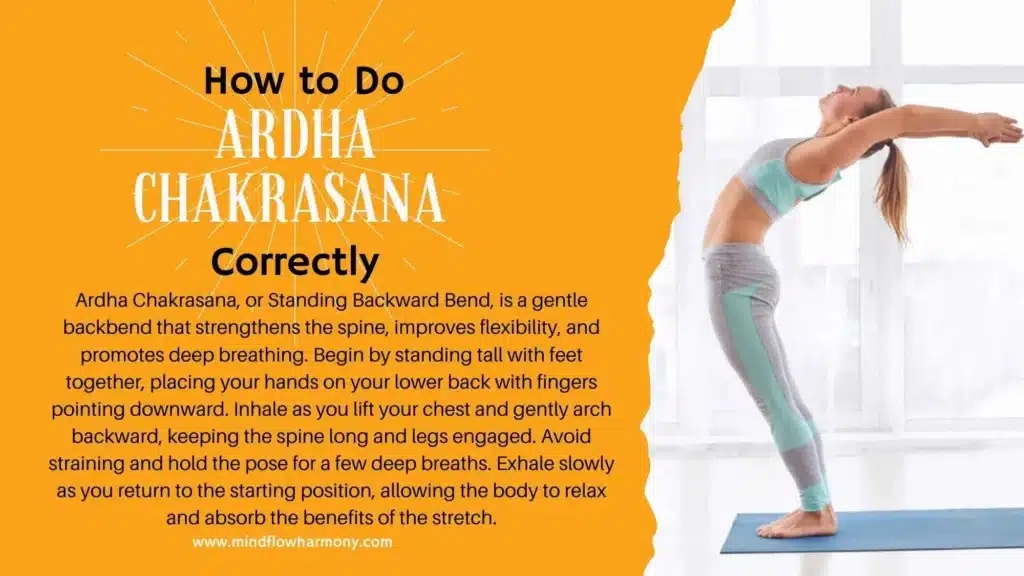
Ardha Chakrasana also known as Standing Backward Bend brings rejuvenation to the body while it strengthens your back enhances your spinal flexibility and allows deep breathing. Achieving all the benefits of this practice together with preventing injuries requires correct body alignment alongside controlled breathing throughout the session. Now its time to learn how to do Ardha Chakrasana.
Step-by-Step Guide to do Ardha Chakrasana Correctly
- Starting Position
Begin the exercise in a standing position with feet together while resting your arms naturally at your sides. Position your body weight equally between both feet to establish a secure base. Your spine should be straight while your shoulders stay relaxed with your eyes facing forward. You should activate your thighs for minimal support of your lower body.
A robust beginning stance provides stability which protects the lower back from excessive strain. Your feet provide stability for the body when you begin your backbend movements.
- Hand Placement
Your fingers should point down while your thumbs should rest on both sides of your spine by placing your hands on your lower back. Your palms should gently press against the lumbar area while your elbows remain drawn inward.
Using the right hand position enables the backward stretch to distribute evenly which protects the lower back from excessive strain. Elongating the elbows toward the body while stretching the chest becomes more effective in this position.
- Inhale & Lift the Chest
Breathe deeply while you elevate your chest towards the ceiling yet preserve an elongated spine position. Keep your upper body from sinking toward your lower back because you should picture your chest lifting skyward. Your leg position needs strength to stabilize the posture.
The inhalation process assists with chest expansion until a smooth backbend is achieved. The body remains stable by engaging core muscles and leg muscles which prevents compression of the lumbar spine.
- Stretch & Hold the Pose
Move your body into a backward arch position while allowing your neck to lift slightly upward without tension. You should only bend your body to comfortable limits without straining. Maintain the position while taking three to five breaths and practicing deep extended breathing through both inhaling and exhaling phases.
The spinal area gains extended mobility while the heart center receives increased opening through this phase. The body achieves comfort during stretching through deep breathing which also produces relaxation for the body.
- Return to Normal Position
You should activate your core muscles through an exhale to return to a standing position. The transition should occur with careful movement to prevent dizziness or loss of balance. Despite returning up to a standing position keep your arms relaxed while taking time to evaluate the sensation in your body.
A controlled exit from the pose enables the spine to reposition itself properly. You will feel revived after the pose concludes because you take time for full integration of its benefits.
Common Mistakes to Avoid
- Stretching the lower back without activating core muscles creates a risk of injury. Keep your core muscles activated to protect your spine during this movement.
- The stability of the body suffers when you fail to maintain a slight bend in your knees because locking them brings instability. A micro-bend helps absorb pressure.
- The breath should be deep instead of interrupted because deep breathing provides consistent oxygen flow which improves both the effectiveness and safety of the pose.
Precautions & Contraindications
- People should avoid practicing the pose when they have significant back pain or spinal injuries which could worsen their condition.
- People with vertigo or elevated blood pressure should exercise with caution because the backward posture may lead to dizziness and discomfort.
Conclusion
Ardha Chakrasana delivers multiple benefits while providing an easy approach to improving posture together with flexibility and energy levels. Mindful practice combined with proper alignment allows you to achieve safe access to all the beneficial effects of this posture. Daily inclusion of backbends in your yoga practice helps you develop openness as well as vitality and personal well-being. Be aware of your physical signals while practicing this powerful pose to obtain all its beneficial effects.

